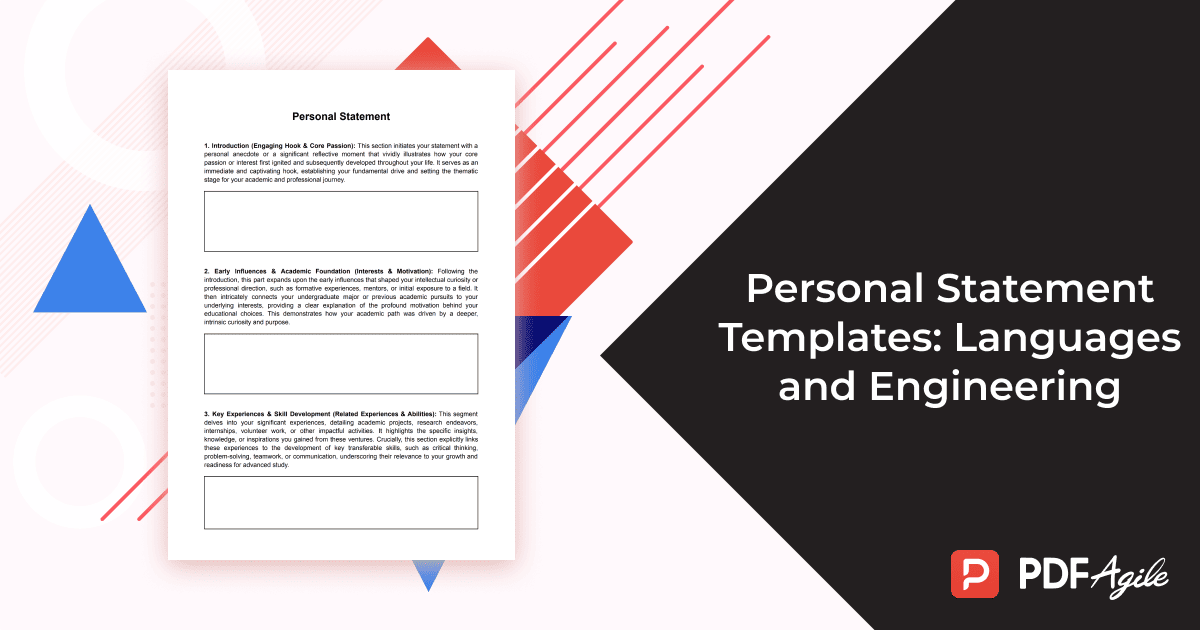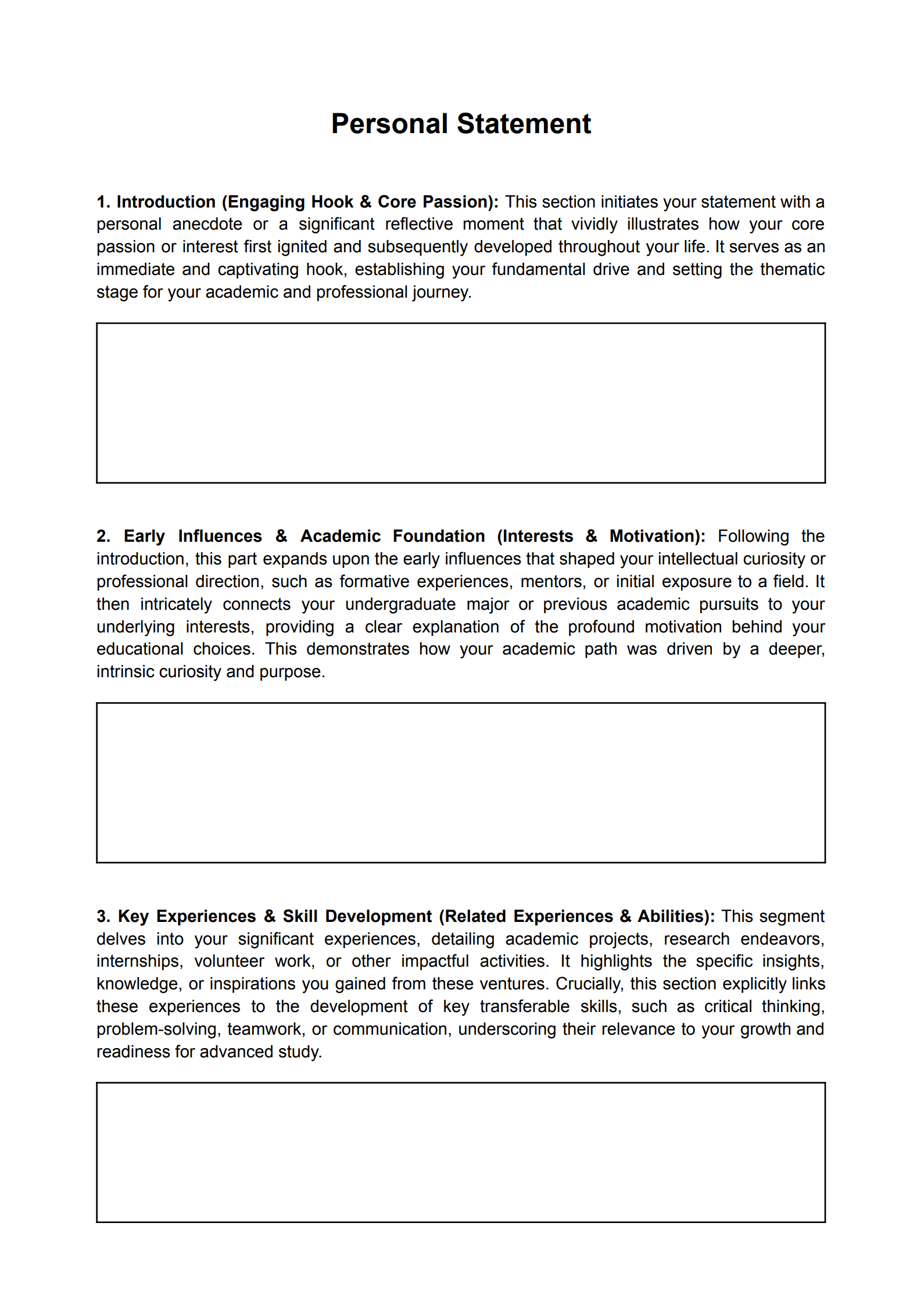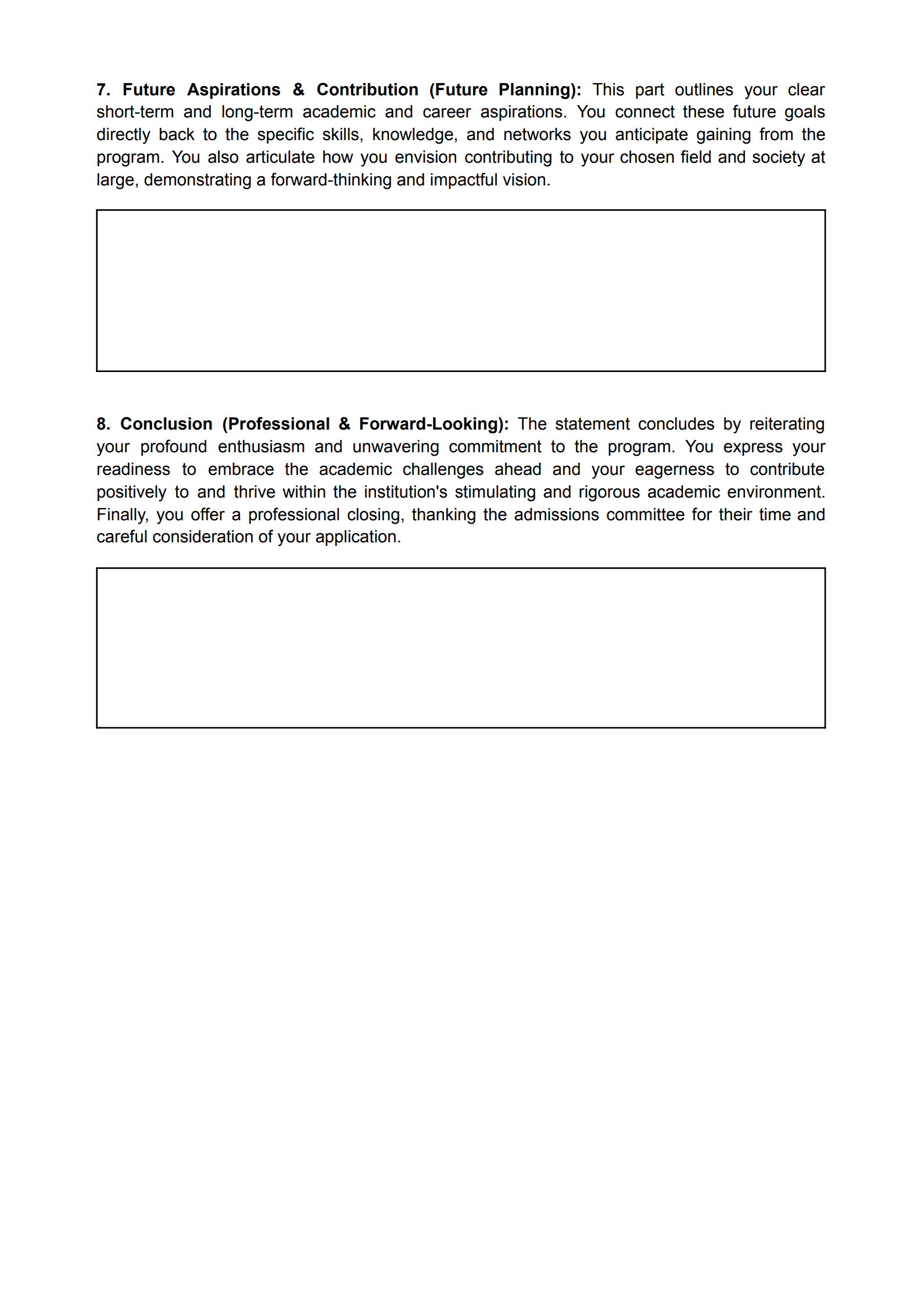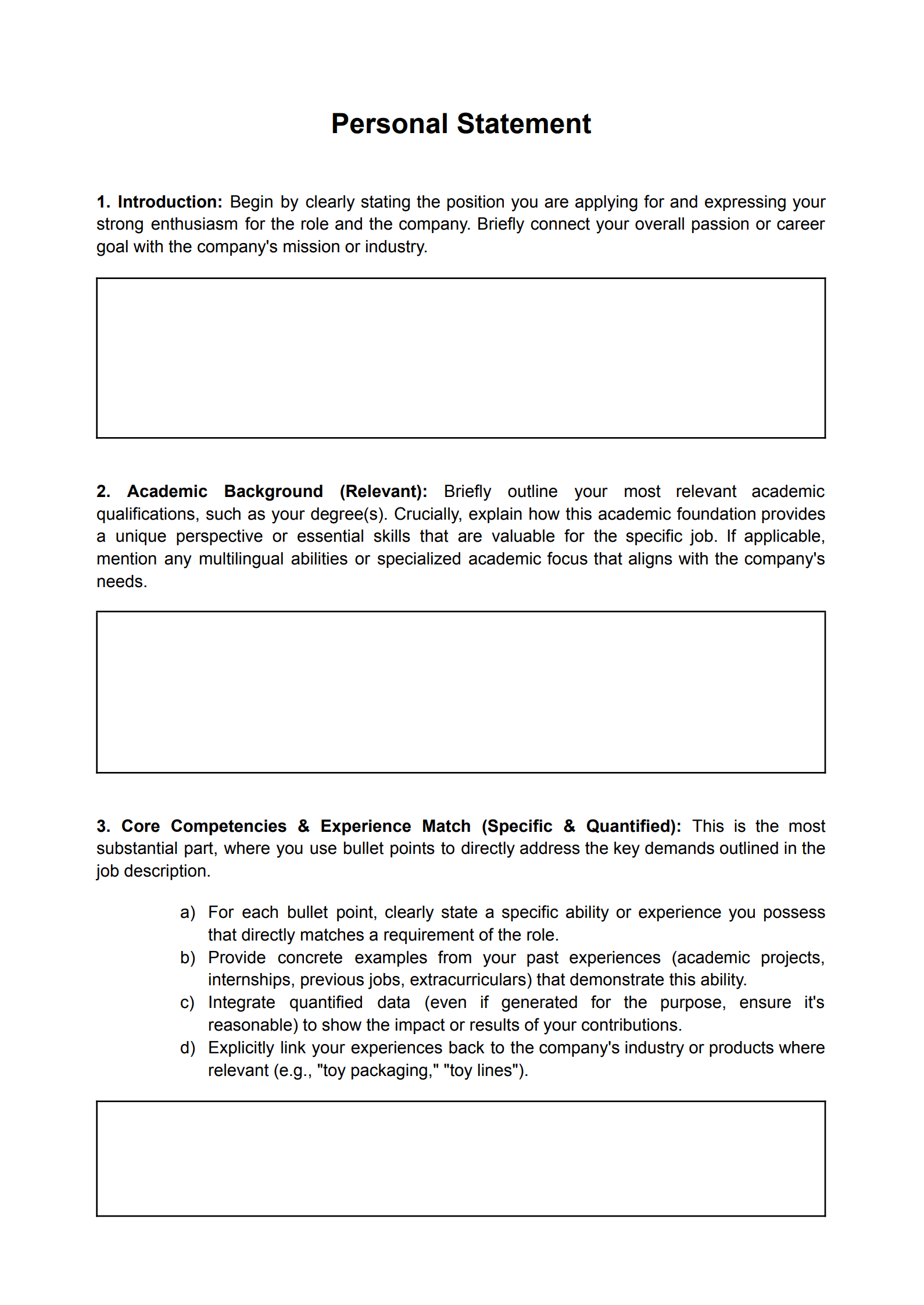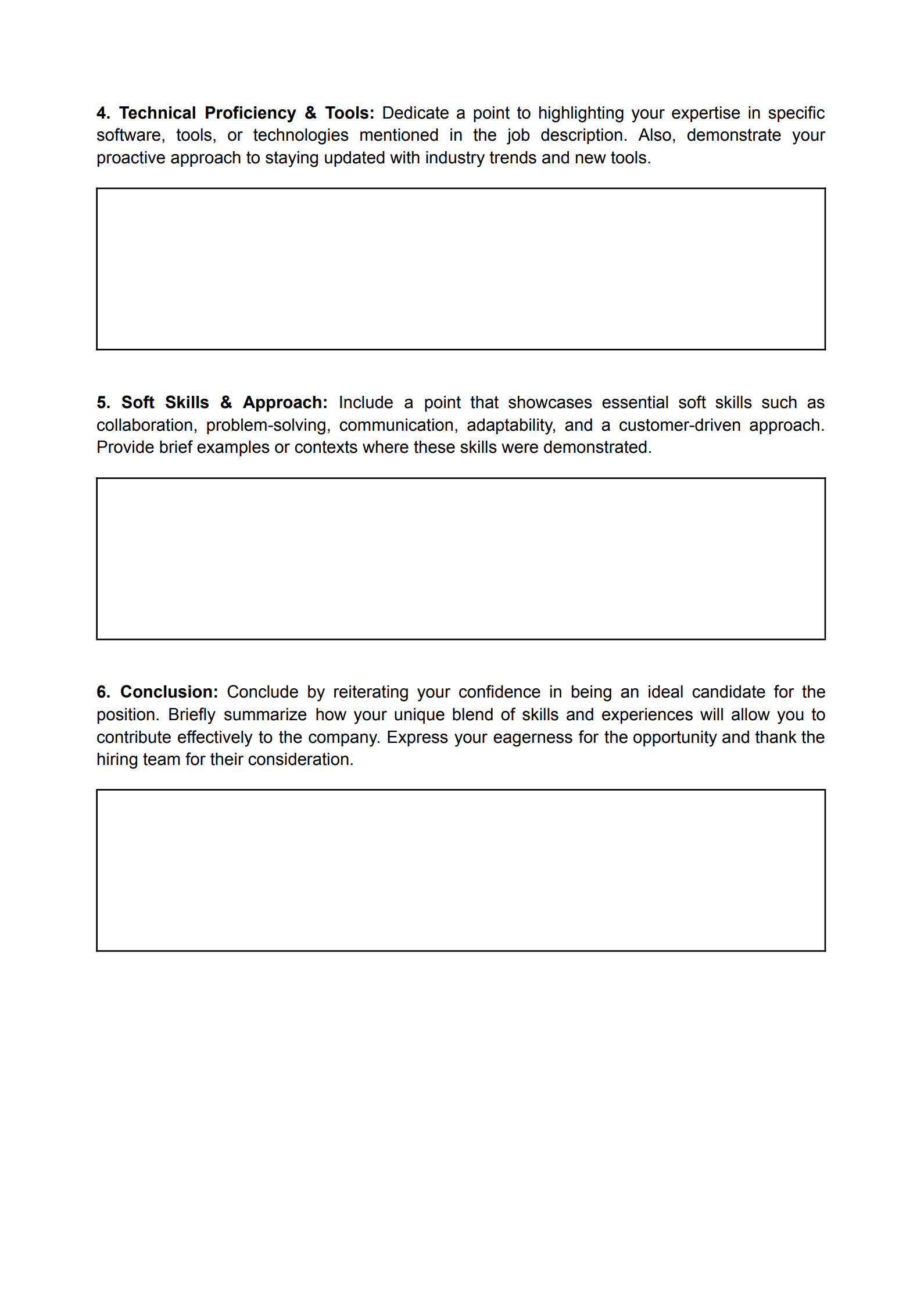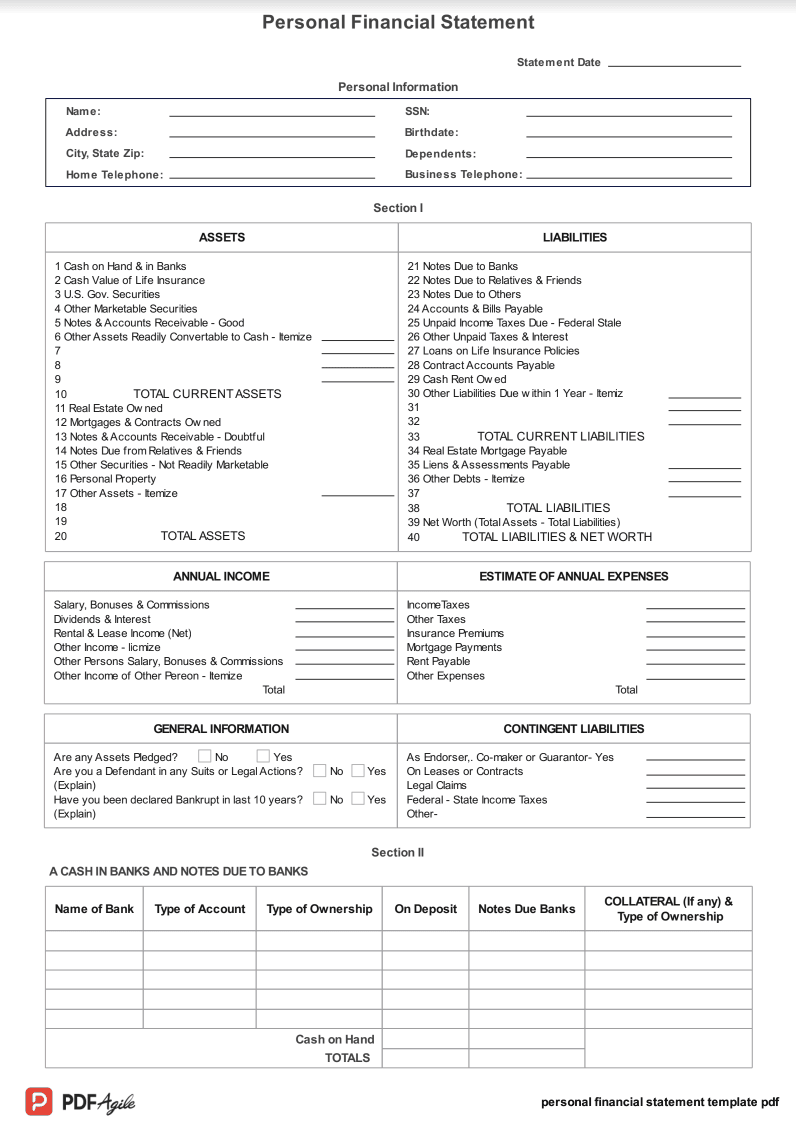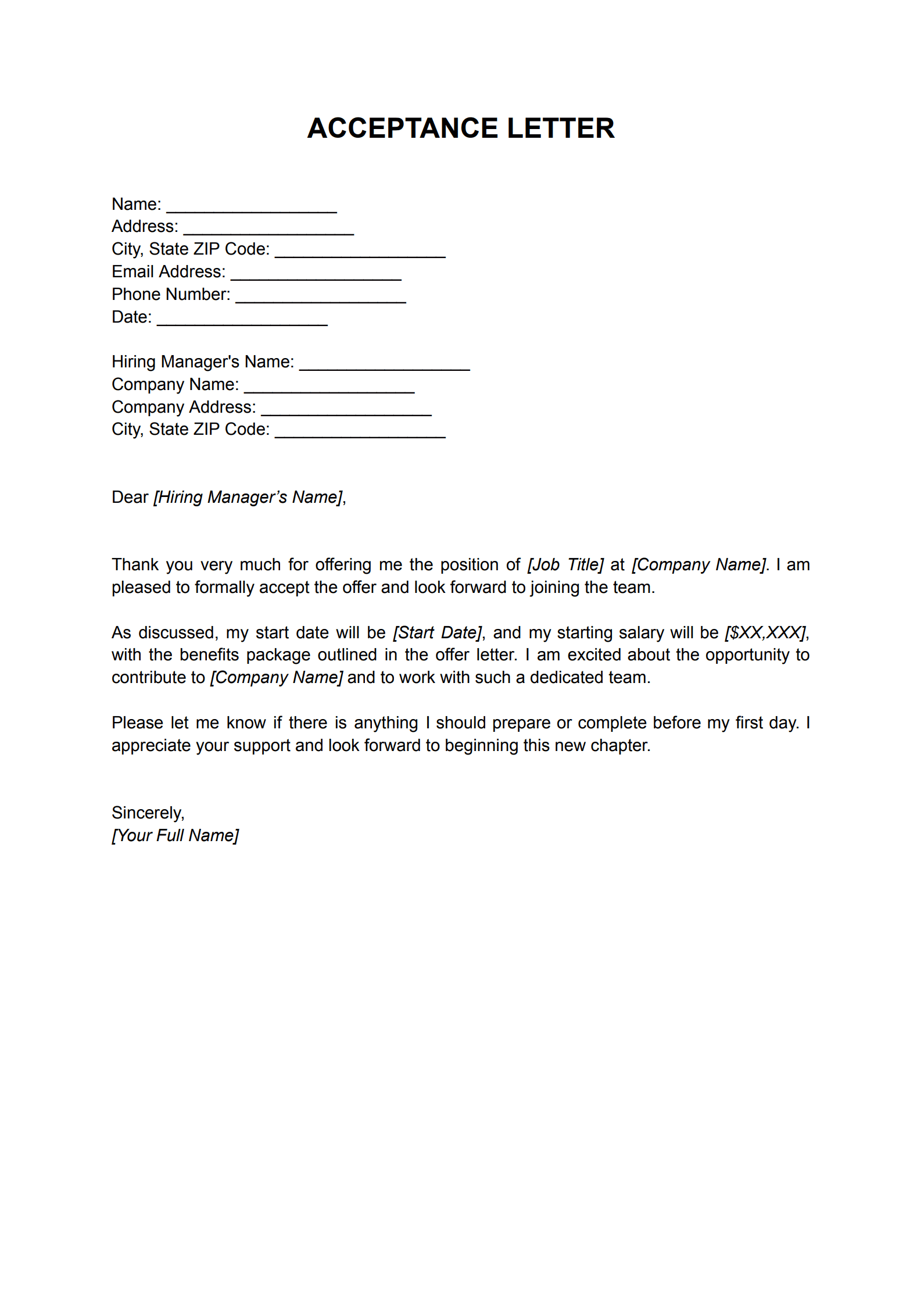A personal statement is arguably one of the most critical documents in your application arsenal, whether you're aiming for a prestigious university program or a highly sought-after job. It's your opportunity to move beyond grades and bullet points, to tell your unique story, articulate your motivations, and demonstrate why you are the ideal candidate.
What is a Personal Statement?
A personal statement serves as a narrative essay that provides insight into your personality, experiences, and aspirations. Its purpose varies slightly depending on the context:
For University Applications: This statement is your chance to explain why you want to study a particular course, what makes you a strong candidate, and how your past experiences and future goals align with the program and institution. It's about showcasing your academic interests, relevant skills, and personal qualities that make you suitable for higher education.
For Job Applications: In this context, often found at the beginning of a resume or as a standalone document, a personal statement (sometimes called a professional summary or career objective) succinctly highlights your skills, experience, and career goals that are most relevant to the specific job you're applying for. It's designed to immediately capture the recruiter's attention and demonstrate your fit for the role.
What are the Differences between a Personal Statement and Similar Documents?
While personal statements share common ground with other application documents, understanding their distinct purposes is crucial:
Personal Statement vs. Cover Letter: A personal statement typically focuses on your personal journey, motivations, and long-term aspirations, offering a deeper dive into who you are and why you want what you want. It's often more reflective and narrative. A cover letter, conversely, is a direct communication to a specific hiring manager or admissions committee, explicitly stating why you are applying for this particular role/program and highlighting specific qualifications from your resume/CV that match the job description. It's more formal and direct.
Personal Statement vs. Resume/CV: A resume/CV is a factual, bullet-pointed summary of your work history, education, skills, and achievements. It's a snapshot of your qualifications. A personal statement is a narrative that explains and expands upon the experiences listed in your resume/CV, providing context, motivation, and personality that cannot be conveyed through bullet points alone.
How to Write Your Unique Personal Statement?
1. For University Applications
This personal statement format is designed to construct a compelling narrative of your unique journey, motivations, and future aspirations, meticulously tailored to the specific academic program or institution you are applying to.
1. Introduction (Engaging Hook & Core Passion): This section initiates your statement with a personal anecdote or a significant reflective moment that vividly illustrates how your core passion or interest first ignited and subsequently developed throughout your life. It serves as an immediate and captivating hook, establishing your fundamental drive and setting the thematic stage for your academic and professional journey.
2. Early Influences & Academic Foundation (Interests & Motivation): Following the introduction, this part expands upon the early influences that shaped your intellectual curiosity or professional direction, such as formative experiences, mentors, or initial exposure to a field. It then intricately connects your undergraduate major or previous academic pursuits to your underlying interests, providing a clear explanation of the profound motivation behind your educational choices. This demonstrates how your academic path was driven by a deeper, intrinsic curiosity and purpose.
3. Key Experiences & Skill Development (Related Experiences & Abilities): This segment delves into your significant experiences, detailing academic projects, research endeavors, internships, volunteer work, or other impactful activities. It highlights the specific insights, knowledge, or inspirations you gained from these ventures. Crucially, this section explicitly links these experiences to the development of key transferable skills, such as critical thinking, problem-solving, teamwork, or communication, underscoring their relevance to your growth and readiness for advanced study.
4. Practical & Applied Experiences (Related Experiences & Abilities): Here, you showcase your hands-on work and practical applications of your skills. This includes specific projects, roles, or contributions where you translated theoretical knowledge into tangible outcomes. Where possible, you quantify your achievements to provide concrete evidence of your impact and capabilities. This section emphasizes the practical skills acquired, detailing your familiarity with relevant processes, project management capabilities, proficiency with tools or methodologies, and a clear understanding of the real-world value of your work.
5. Identification of Current Gaps & Motivation for Graduate Study (Areas for Growth & Program Fit): This crucial part involves an honest self-assessment where you acknowledge your current limitations or areas that require further development within your field, such as a desire for deeper specialization, interdisciplinary understanding, or advanced research skills. You then clearly articulate why pursuing a graduate degree is essential to address these identified gaps, smoothly transitioning into the specific relevance of the program you are applying to.
6. Why This Institution & Specific Program (Attractive Points & Match): In this section, you explicitly state your strong interest in the specific institution and its particular graduate program. You identify and elaborate on the attractive aspects of the curriculum, faculty, research opportunities, or unique resources. Most importantly, you meticulously explain how these specific program features directly address your previously identified areas for growth and perfectly align with your existing experiences and overarching academic and professional goals.
7. Future Aspirations & Contribution (Future Planning): This part outlines your clear short-term and long-term academic and career aspirations. You connect these future goals directly back to the specific skills, knowledge, and networks you anticipate gaining from the program. You also articulate how you envision contributing to your chosen field and society at large, demonstrating a forward-thinking and impactful vision.
8. Conclusion (Professional & Forward-Looking): The statement concludes by reiterating your profound enthusiasm and unwavering commitment to the program. You express your readiness to embrace the academic challenges ahead and your eagerness to contribute positively to and thrive within the institution's stimulating and rigorous academic environment. Finally, you offer a professional closing, thanking the admissions committee for their time and careful consideration of your application.
2. For Job Applications
This type of personal statement is designed to be concise and highly targeted, directly linking your qualifications to the specific demands of the job.
1. Introduction: Begin by clearly stating the position you are applying for and expressing your strong enthusiasm for the role and the company. Briefly connect your overall passion or career goal with the company's mission or industry.
2. Academic Background (Relevant): Briefly outline your most relevant academic qualifications, such as your degree(s). Crucially, explain how this academic foundation provides a unique perspective or essential skills that are valuable for the specific job. If applicable, mention any multilingual abilities or specialized academic focus that aligns with the company's needs.
3. Core Competencies & Experience Match (Specific & Quantified): This is the most substantial part, where you use bullet points to directly address the key demands outlined in the job description.
- For each bullet point, clearly state a specific ability or experience you possess that directly matches a requirement of the role.
- Provide concrete examples from your past experiences (academic projects, internships, previous jobs, extracurriculars) that demonstrate this ability.
- Integrate quantified data (even if generated for the purpose, ensure it's reasonable) to show the impact or results of your contributions.
- Explicitly link your experiences back to the company's industry or products where relevant (e.g., "toy packaging," "toy lines").
4. Technical Proficiency & Tools: Dedicate a point to highlighting your expertise in specific software, tools, or technologies mentioned in the job description. Also, demonstrate your proactive approach to staying updated with industry trends and new tools.
5. Soft Skills & Approach: Include a point that showcases essential soft skills such as collaboration, problem-solving, communication, adaptability, and a customer-driven approach. Provide brief examples or contexts where these skills were demonstrated.
6. Conclusion: Conclude by reiterating your confidence in being an ideal candidate for the position. Briefly summarize how your unique blend of skills and experiences will allow you to contribute effectively to the company. Express your eagerness for the opportunity and thank the hiring team for their consideration.
Real-World Journeys: From Academia to Industry
Consider the paths of two ambitious individuals, Lucy and Anna, as they navigate the competitive landscapes of both academic and professional applications. Lucy, driven by a lifelong passion for art and design, first embarked on her journey to secure a Master of Design (Integrated Design) at the prestigious National University of Singapore. Her personal statement for this academic pursuit meticulously detailed her artistic evolution, international experiences, and the strategic vision she held for integrating diverse design disciplines. Upon successfully completing her master's, Lucy then turned her sights towards the vibrant toy industry, specifically aiming for a Graphic Designer position at Jazwares. Her job application personal statement had to pivot, translating her academic achievements and broad design experiences into tangible skills directly relevant to creating captivating visuals for children's products.
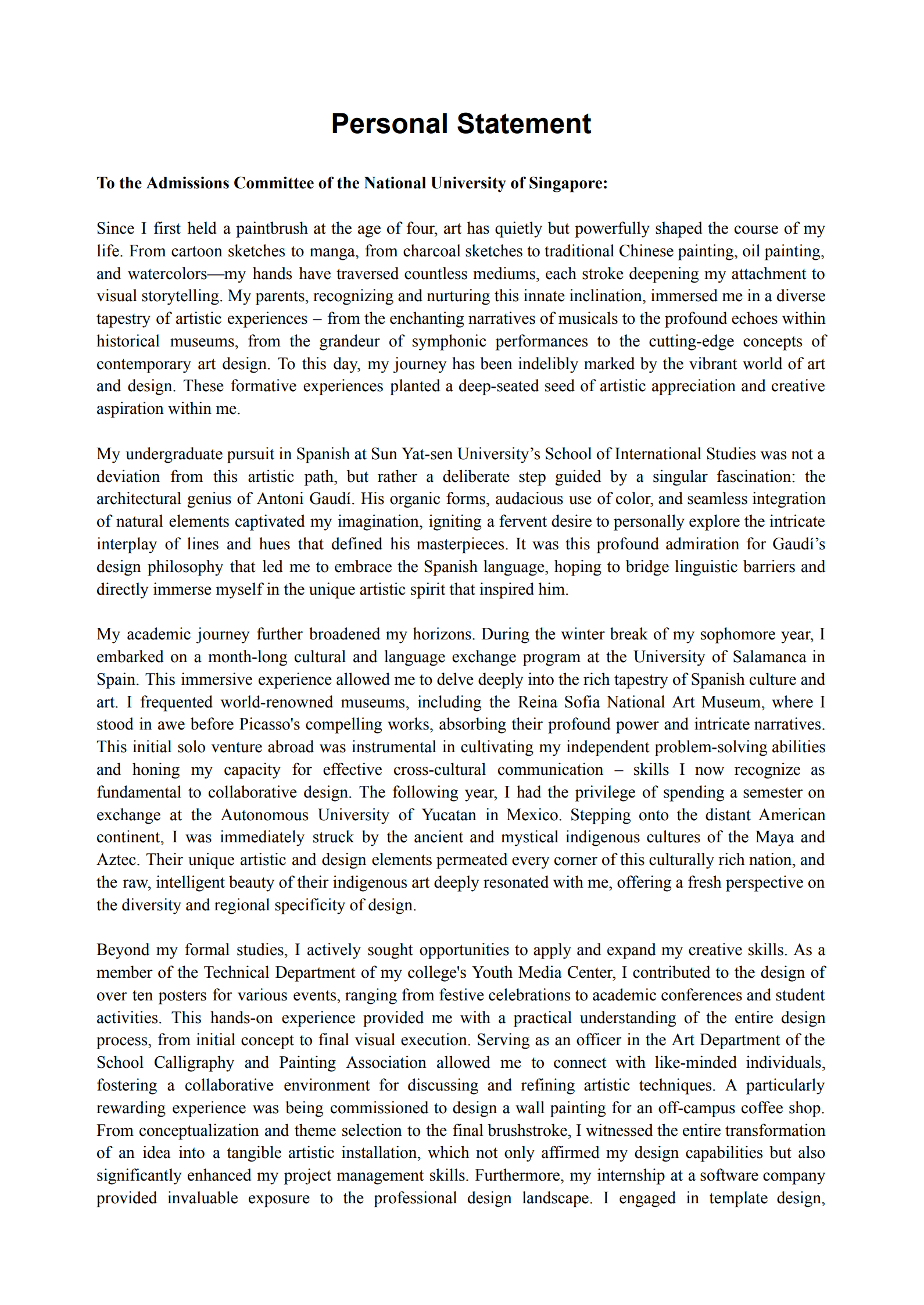
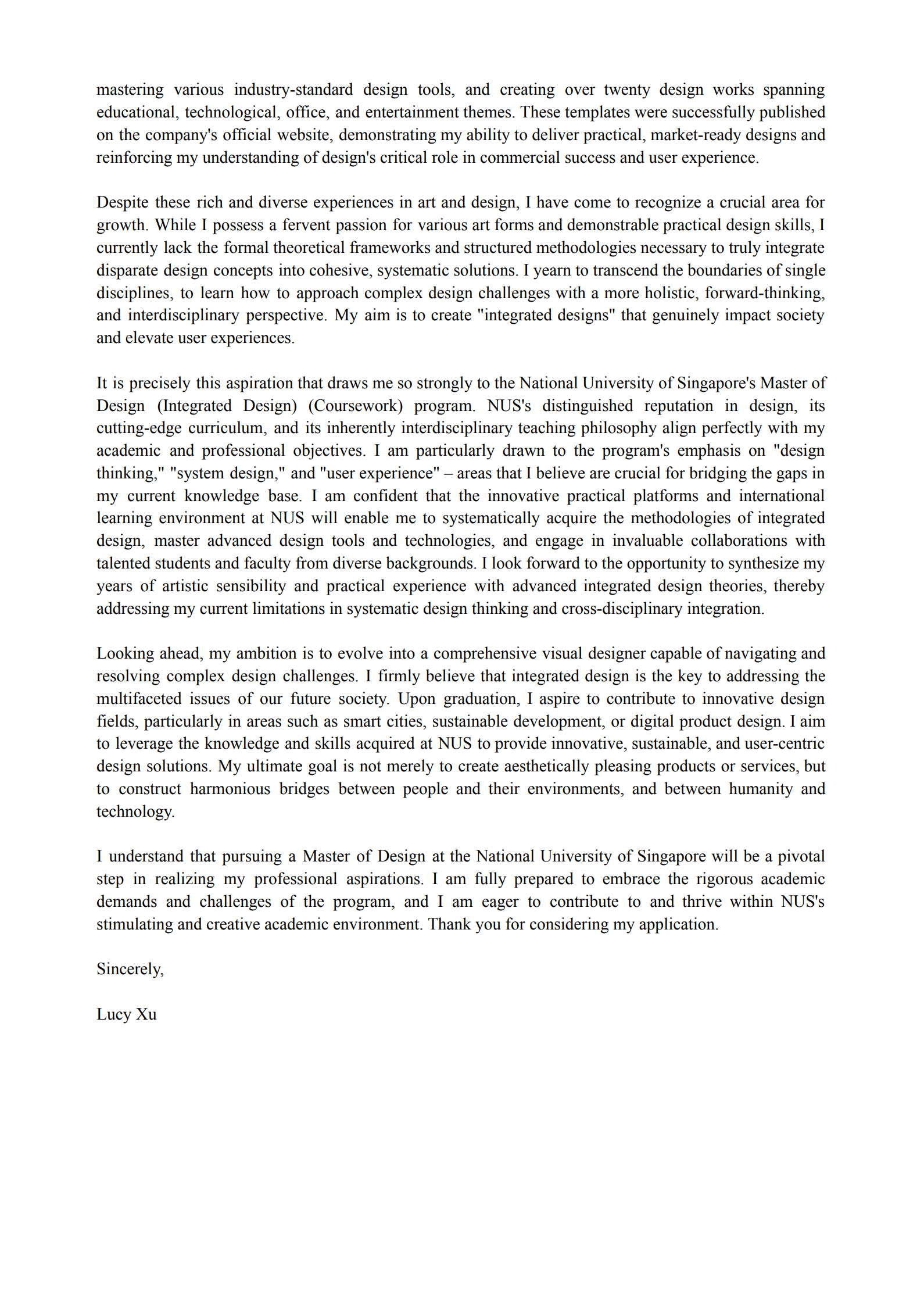
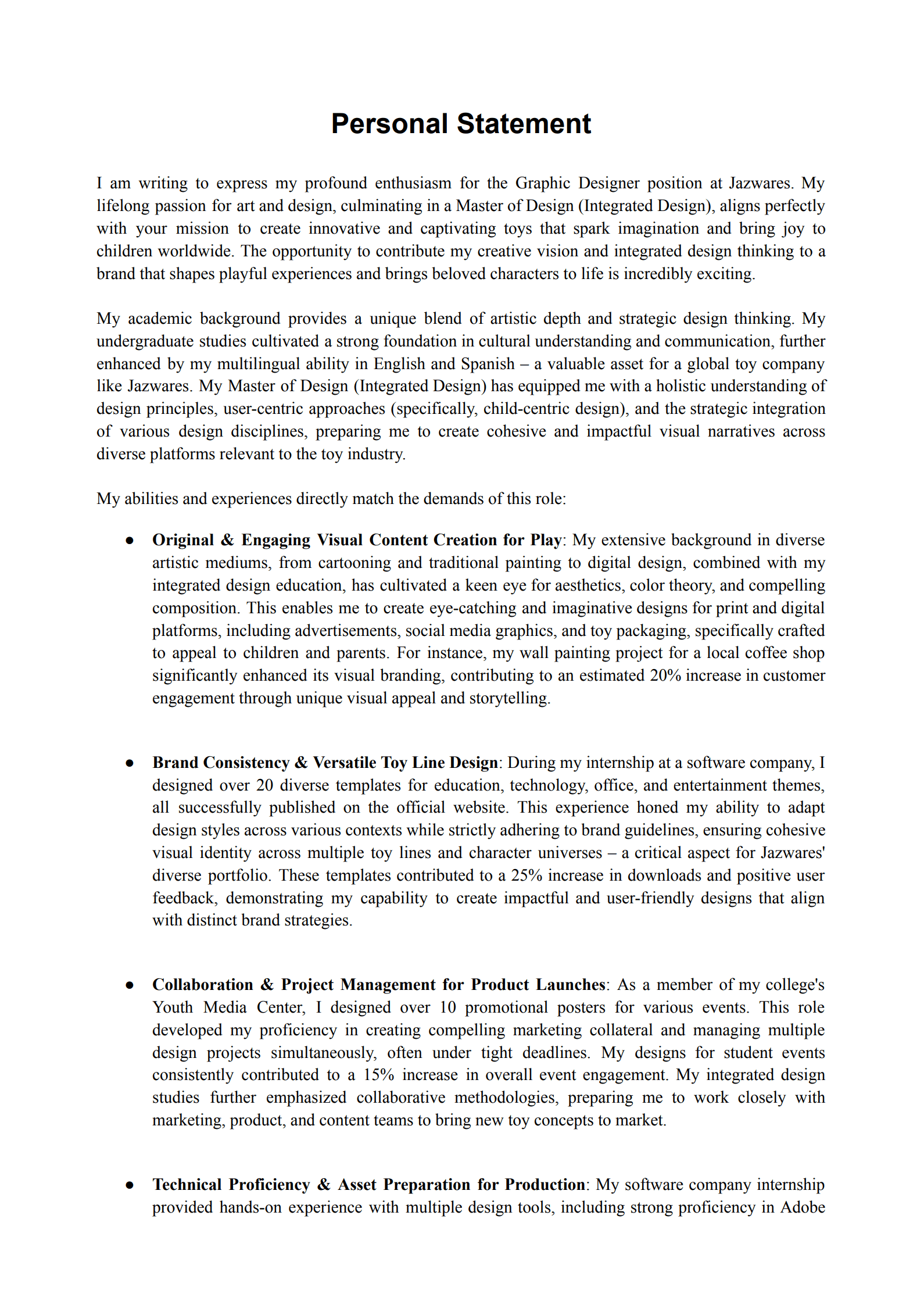
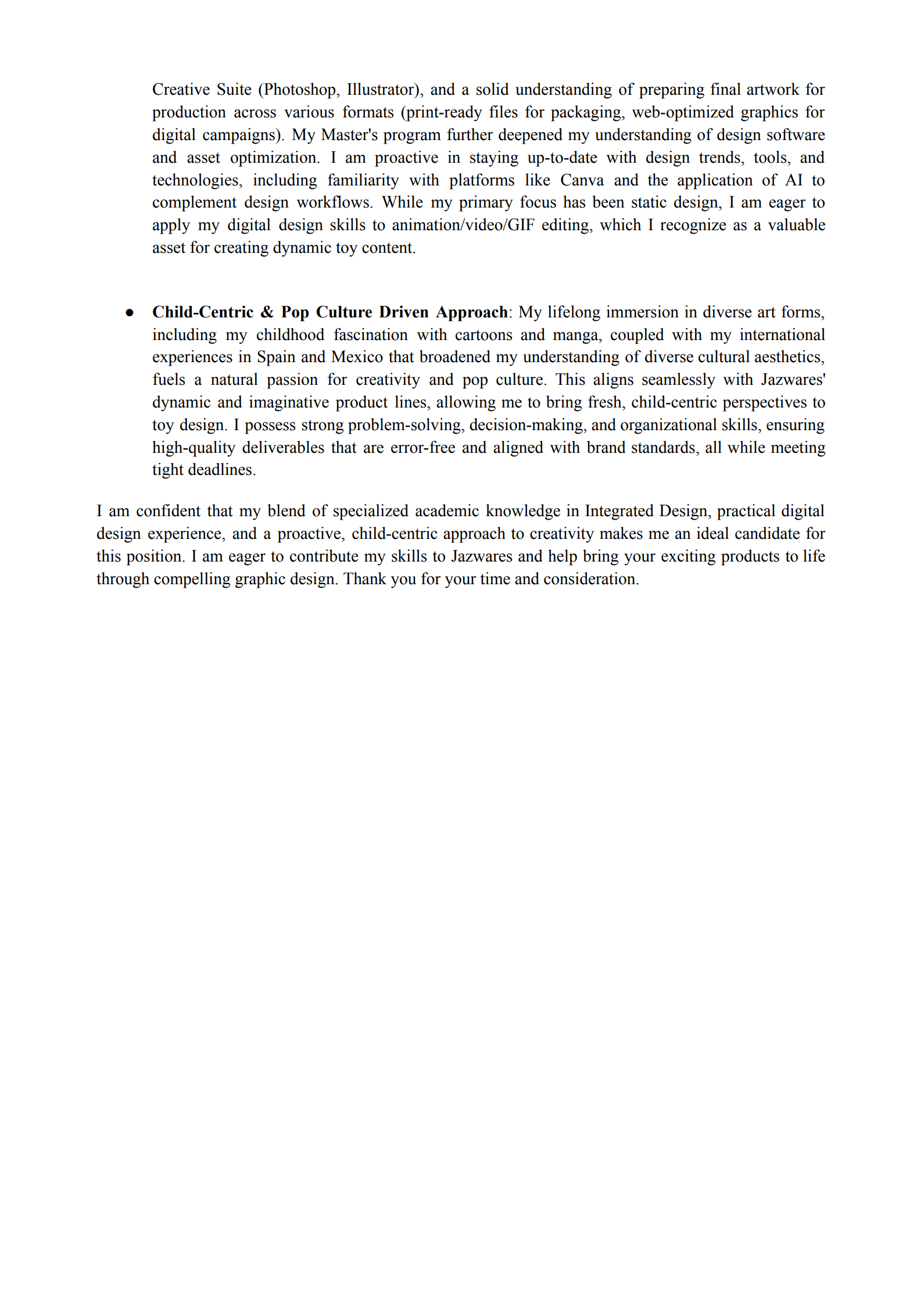
Concurrently, Anna, captivated by the marvels of flight from a young age, pursued her Master of Science in Aerodynamics and Computation at the esteemed University of Southampton. Her university personal statement articulated her deep academic interest in fluid dynamics and computational methods, showcasing her foundational knowledge and aspirations to contribute to aerospace innovation. Following her master's degree, Anna set her sights on a challenging role as an Aerodynamics Engineer at Boeing. Her job application required her to distill her advanced academic expertise and practical engineering experiences into a concise narrative, demonstrating her direct fit for designing and optimizing the next generation of aircraft. These examples highlight the nuanced yet crucial differences in crafting personal statements for varying application contexts.
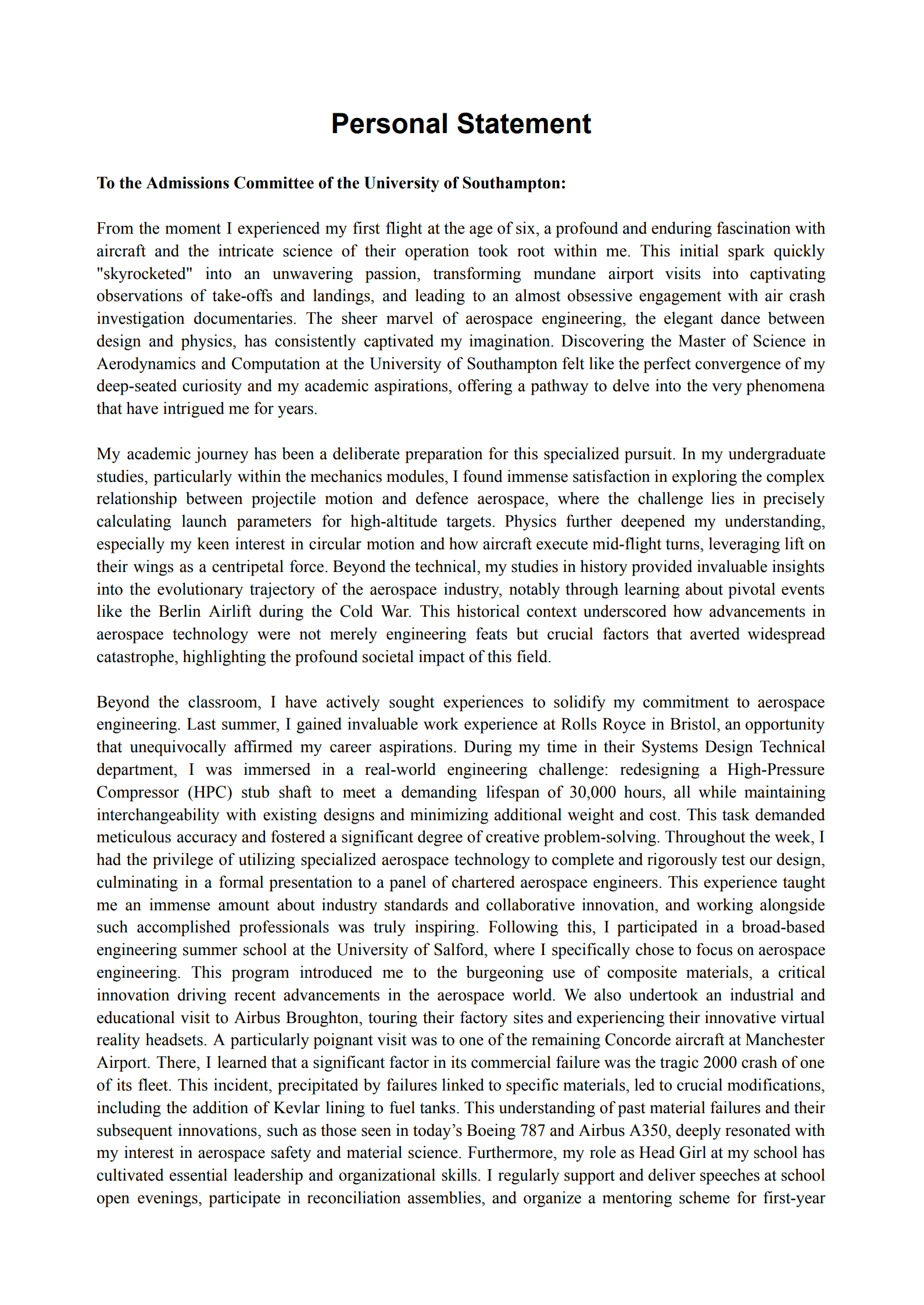

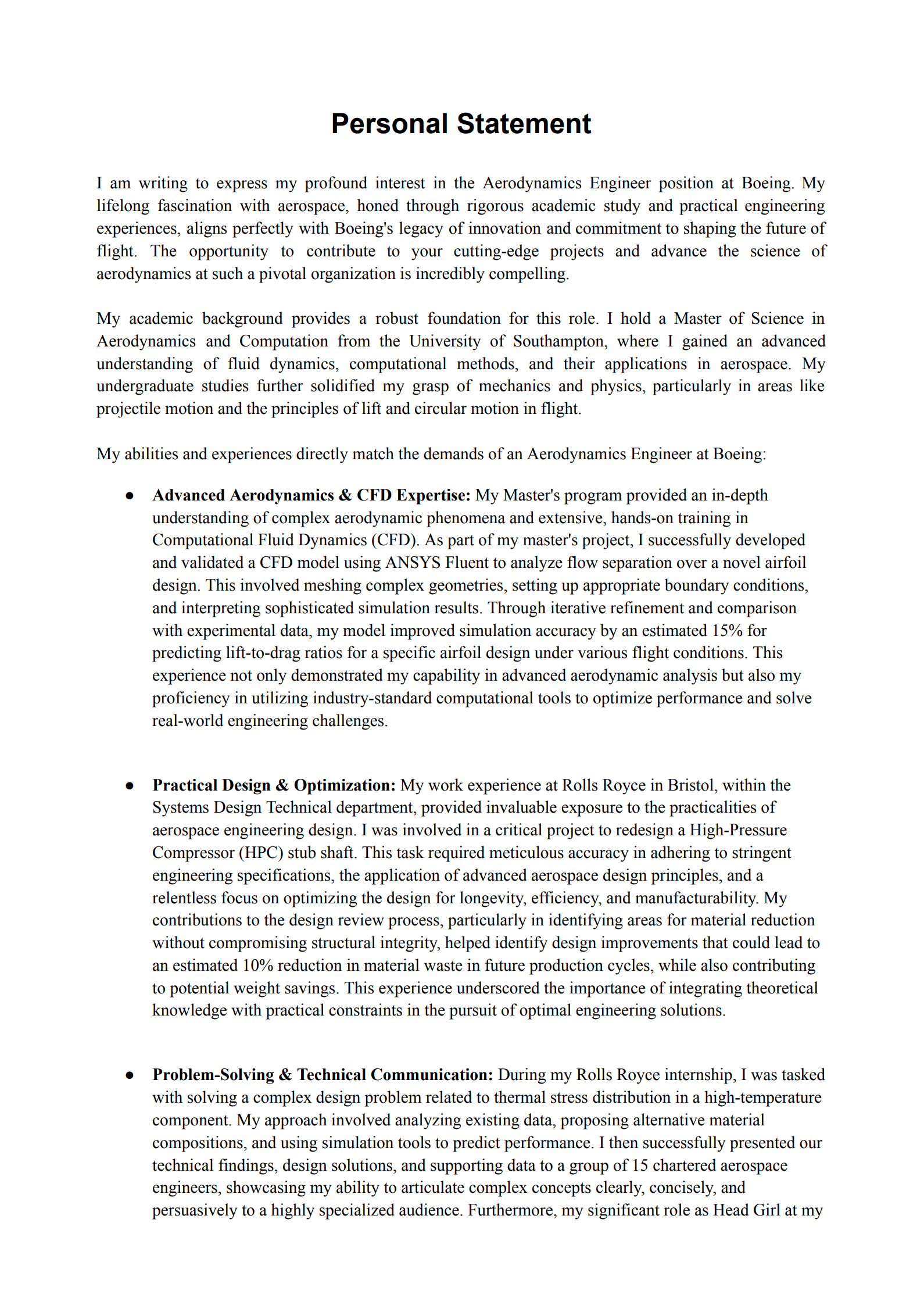
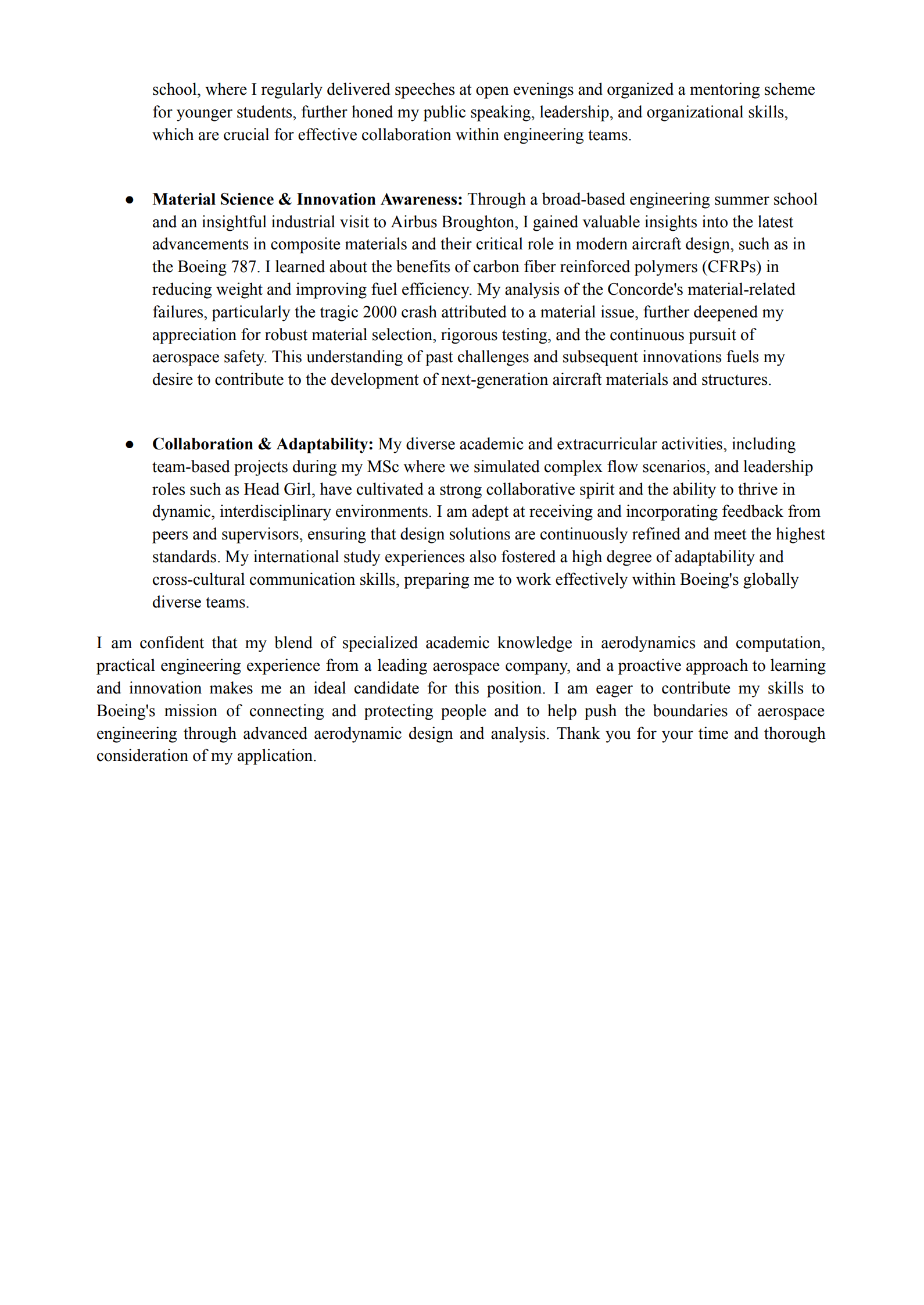
Tips for Writing Your Personal Statement
Crafting an effective personal statement requires introspection, clarity, and strategic storytelling. Here are some key tips:
Understand Your Audience: Tailor your statement to the specific university program or job description. Research the institution's values, the program's curriculum, or the company's culture.
Tell a Story: Start with an engaging hook that captures attention. Instead of just listing achievements, weave them into a narrative that demonstrates your growth, learning, and passion.
Be Specific and Provide Examples: General statements are forgettable. Support your claims with concrete examples from your experiences. Quantify your achievements whenever possible (e.g., "increased efficiency by 15%").
Show, Don't Just Tell: Instead of saying "I am a good leader," describe a situation where you demonstrated leadership.
Highlight Transferable Skills: Even if an experience isn't directly related, explain how it developed skills (e.g., problem-solving, teamwork, critical thinking) that are relevant to the application.
Address "Why This Program/Job?": Clearly articulate your motivation for choosing this specific program or this specific job at this specific institution/company. Show genuine interest and research.
Connect Past, Present, and Future: Explain how your past experiences led you to your current aspirations, and how this program/job will help you achieve your future goals.
Be Authentic: Your unique voice and personality should shine through. Avoid clichés and generic phrases.
Proofread Meticulously: Errors in grammar, spelling, or punctuation can undermine your credibility. Read it aloud, use grammar checkers, and ask others to review it.
Common Mistakes in Writing a Personal Statement
Avoiding these common pitfalls can significantly strengthen your application:
Being Too General: A generic statement that could be sent to any institution or company will not impress. Lack of specificity shows a lack of genuine interest.
Simply Listing Resume Points: The personal statement is not a narrative version of your resume. It should provide context, reflection, and deeper insights into your experiences.
Using Clichés: Phrases like "passion for learning" or "team player" without specific examples are weak. Show, don't tell.
Being Negative or Making Excuses: Avoid complaining about past experiences or making excuses for perceived weaknesses. Focus on growth and learning.
Sounding Arrogant or Overly Humble: Strike a balance between confidence and humility. Highlight your strengths without boasting, and acknowledge areas for growth constructively.
Lack of Structure or Flow: A disorganized statement can be confusing and difficult to read. Ensure a logical progression of ideas.
By understanding the purpose, structure, and key elements of a personal statement, you can craft a powerful narrative that effectively communicates your unique qualifications and aspirations, setting you apart in a competitive application landscape.
Free Download: Your Customizable Personal Statement Templates
Need a quick and easy way to create professional Personal Statement Templates? Download our free, customizable templates by clicking the Use Template button on this page. Simply add your specific information and print them out.
